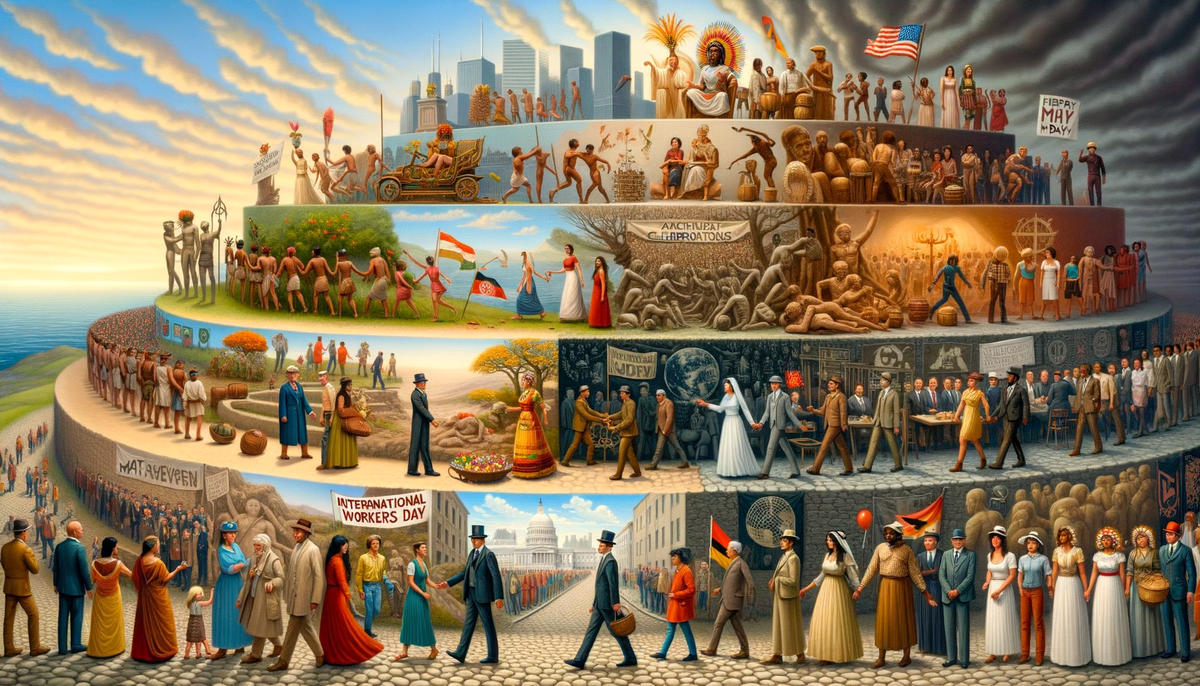Exploring the Significance of May 1: From Ancient Traditions to Modern Movements
Explore the rich history and global significance of May 1, from ancient rituals to modern International Workers' Day observances.

May 1, widely recognized as May Day, is steeped in a rich tapestry of history, culture, and social significance. This day stands as a beacon of the labor movement's triumphs and trials across the globe, while its roots in various ancient traditions highlight its universal appeal. This article explores how May 1 has come to symbolize an array of historical, cultural, and socio-political narratives.
Historical Significance of May 1
Ancient and Cultural Origins
Originally celebrated as a spring festival during ancient Roman times, May 1 heralded the return of spring, marked by festivities such as dancing around the maypole and engaging in rural folk traditions across Europe. These celebrations were deeply embedded in pagan rituals, symbolizing the earth's renewal and fertility. [source]
Labor Movement and International Workers' Day
The transformation of May 1 into a day honoring workers' rights is rooted in the labor movement of the late 19th century. In 1886, a historic wave of rallies and strikes swept across the United States as workers demanded an eight-hour workday. This movement was forcefully highlighted by the tragic Haymarket affair in Chicago, where violent confrontations led to deaths and the subsequent execution of labor activists. In 1889, socialist groups and trade unions across Europe consecrated May 1 as International Workers' Day, a tribute to the Chicago events. [source]
Global Observance and Significance
May Day evolved into a major holiday within the Soviet Union and Eastern Bloc, famed for its grand parades, especially in Moscow's Red Square, emphasizing workers' solidarity and showcasing military vigor. In Germany and other countries, May 1 was declared an official public holiday, though regimes like the Nazi government curtailed independent labor unions' activities. Internationally, May Day is a day of protest, demonstrations, and spirited celebrations advocating for labor rights. [source]
May 1 in the United States
Alternative Observances
In the U.S., Labor Day is observed on the first Monday in September, a strategic move to dissociate from the socialist connotations and the turbulent legacy of the Haymarket incident. Interestingly, during the intense anti-communist sentiment of the 1950s, May 1 was repurposed as Loyalty Day, aiming to foster national unity and patriotic fervor as a counter-narrative to the internationalist theme of May Day.
Contemporary Relevance
Despite official redirection efforts, May 1 persists as a touchstone for protest in the U.S., notably linked to labor rights advocacy and more recently, the movements for immigrant rights and economic justice. This ongoing activism underscores the date's enduring importance in America's socio-political landscape.
Notable Events on May 1
Several pivotal events have occurred on May 1, embedding it deeper within historical narratives:
- 1885: Inauguration of the original Chicago Board of Trade Building.
- 1886: The culmination of nationwide rallies for an eight-hour workday, leading to the Haymarket affair.
- 1894: Arrival of Coxey’s Army, pioneering America's significant protest march in Washington, D.C.
- 1896: Assassination of Naser al-Din, Shah of Iran.
- 1898: Battle of Manila Bay during the Spanish–American War, highlighting American naval ascendancy.
Conclusion
May 1 remains a multifaceted symbol of ancient cultural festivities and a pivotal day in labor history with continuing socio-political relevance. Its global recognition as a day of seasonal renewal and social progress attests to its robust legacy. For May 1 professionals and leaders, understanding this historical depth is vital as it continues to inform current strategies and operations.
Call to Action: To delve deeper into the transformative power of May 1 in shaping modern socio-economic dynamics, visit our full archive of expert analyses and connect with our team today.




